The bullish preferred count
Our preferred Elliott Wave count presumes that the S&P 500 has only completed intermediate wave 3, of primary wave (5), of cycle wave V up. The most bullish interpretation is that intermediate wave 4 down bottomed on April 7th at SPX 4835. If correct, then intermediate wave 5 up is now in progress and has the potential to carry price into the SPX 6800-7500 range depending upon whether intermediate wave 5 traces out an impulse wave or and “ending diagonal” triangle.
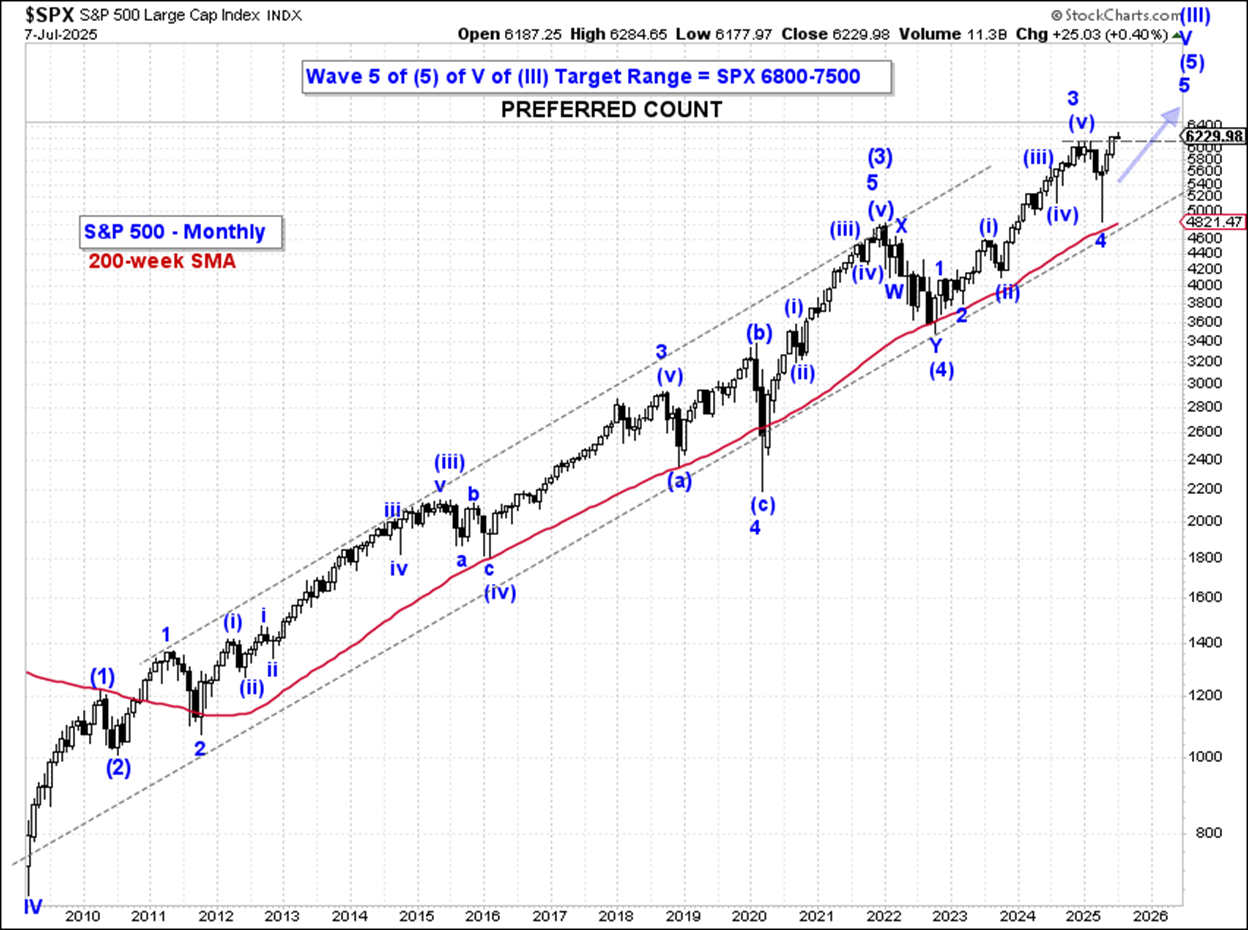
Source: www.stockcharts.com
The bearish alternate counts
Our two top alternate Elliott Wave counts presume that the advance off the April 7th low of SPX 4835 is a countertrend move labeled as minor wave (b) up. If correct, then minor wave (b) could carry modestly higher into the SPX 6300 range, before minor wave (c) down ensues. Alternate I: A “symmetrical triangle” pattern. Under this rubric, minor waves (c), (d), and (e) would trace out a lateral corrective wave form making a series of higher lows and lower highs until the coil is complete. It will be followed by a thrust above the upper boundary of the pattern into intermediate wave 5 up. Some would say that this is a neutral scenario where the market simply corrects in time rather than by price.
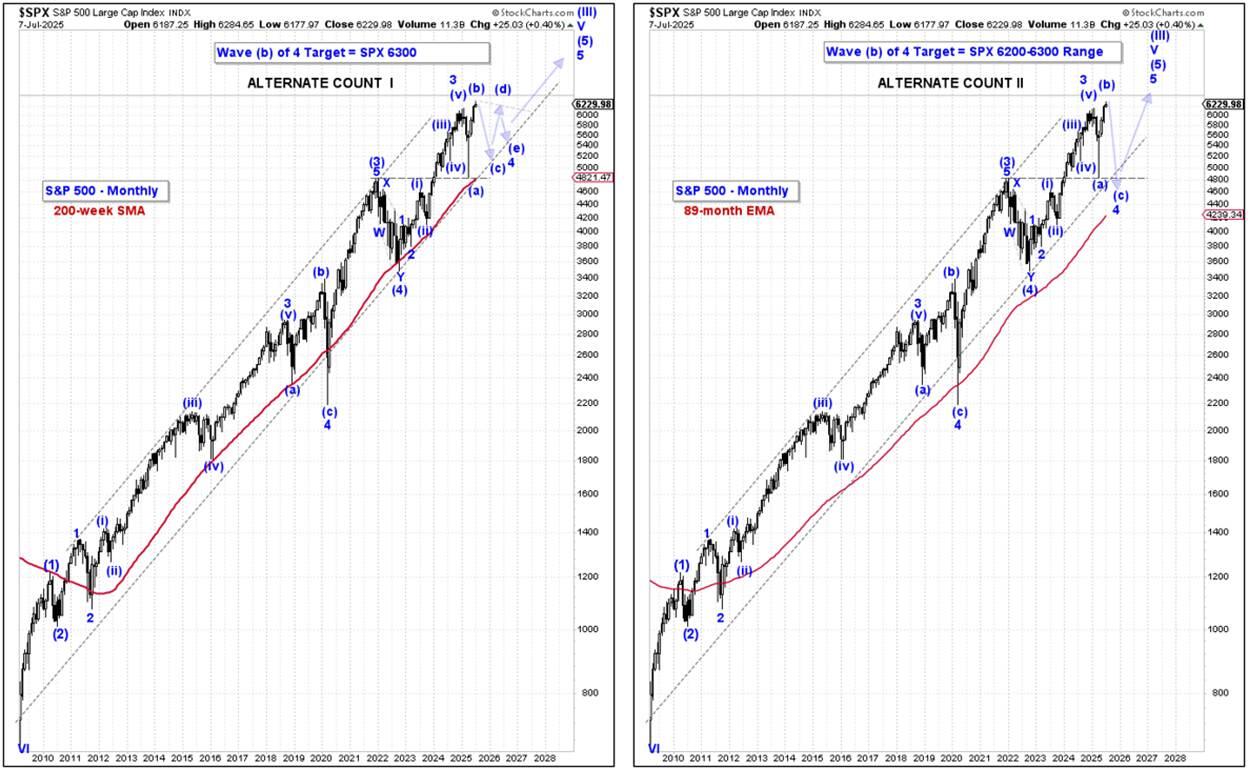
Source: www.stockcharts.com
Alternate II: An “expanded flat” pattern. Under this rubric, minor wave (c) down would take the form of an impulse pattern. The decline would be aggressive and forceful — as if it were the third wave within an impulse pattern. The decline would then carry to new bear market lows surpassing the minor wave (a) low at SPX 4835. If this alternate proves correct, then minor wave (c) could be up to 1.618x the distance of minor wave (a) down — or about 2,122 handles. If today’s price action in the S&P 500 is indicating that minor wave (b) up has terminated, then a downside target of SPX 4150 would be reasonable. This is the second most bearish interpretation of the market’s price action. The most bearish interpretation would be that intermediate wave 5, of primary wave (5), of cycle wave V up has terminated. We’re not there yet in our analysis. But a sustained monthly close below the 200-week MA would get us there.
Short-term pattern considerations
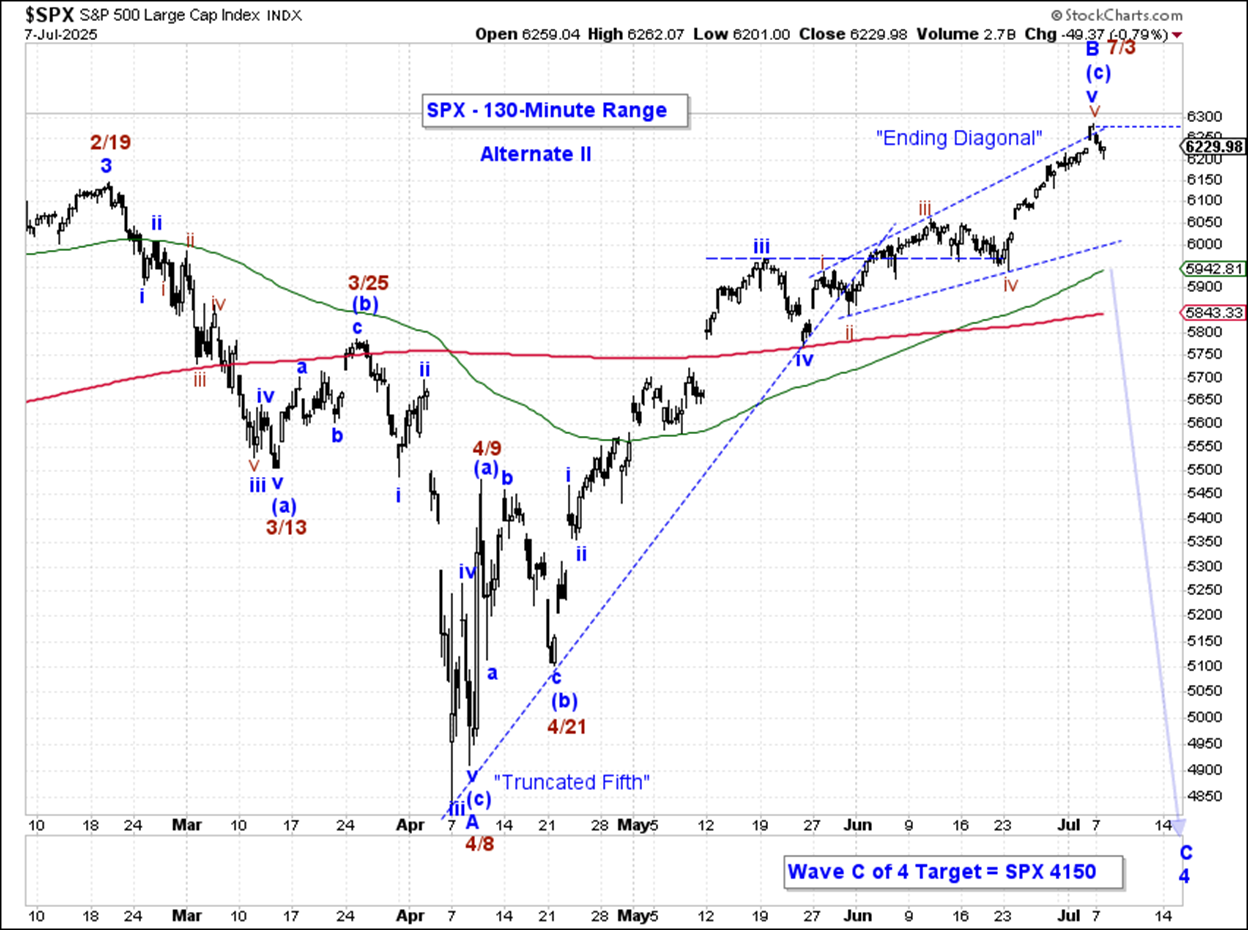
Source: www.stockcharts.com
One reason not to dismiss the bearish alternate count is because the S&P 500 has been tracing out what appears to us to be an ending diagonal triangle of the “expanding” variety. If correct, this is a terminal pattern. Old school chartists might describe it as “three drives to a top.” This second alternate count actually aligns best with our preferred count for the S&P 500 Equal-Weight index, which so far has failed to post a new high, and appears poised to terminate intermediate wave B up. If this count is correct, then wave C will follow with an aggressive decline.
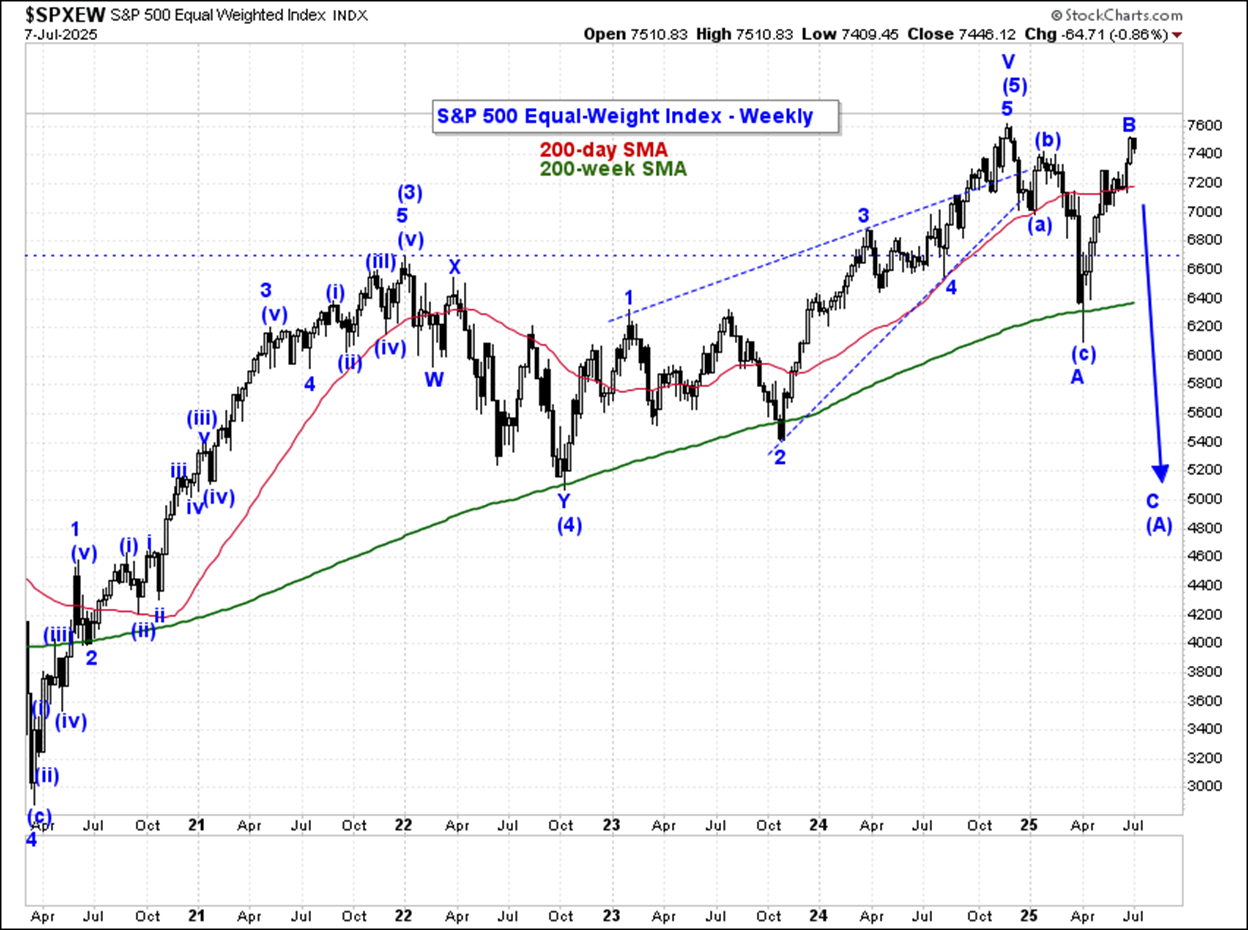
Source: www.stockcharts.com
Long-term pattern implications
Regardless of which, if any of these intermediate degree wave counts is correct, we must not lose sight of the bigger picture. There is a very high probability that our cycle wave V count is accurate. If so, then supercycle wave (III) is coming to its conclusion. When it terminates, whether now or six months from now, it won’t matter whether you caught that last 5%, 10%, or even 20% of the bull market’s upside potential. That’s because when supercycle wave (IV) down begins, the selling will be so swift and merciless you won’t know have time to react.
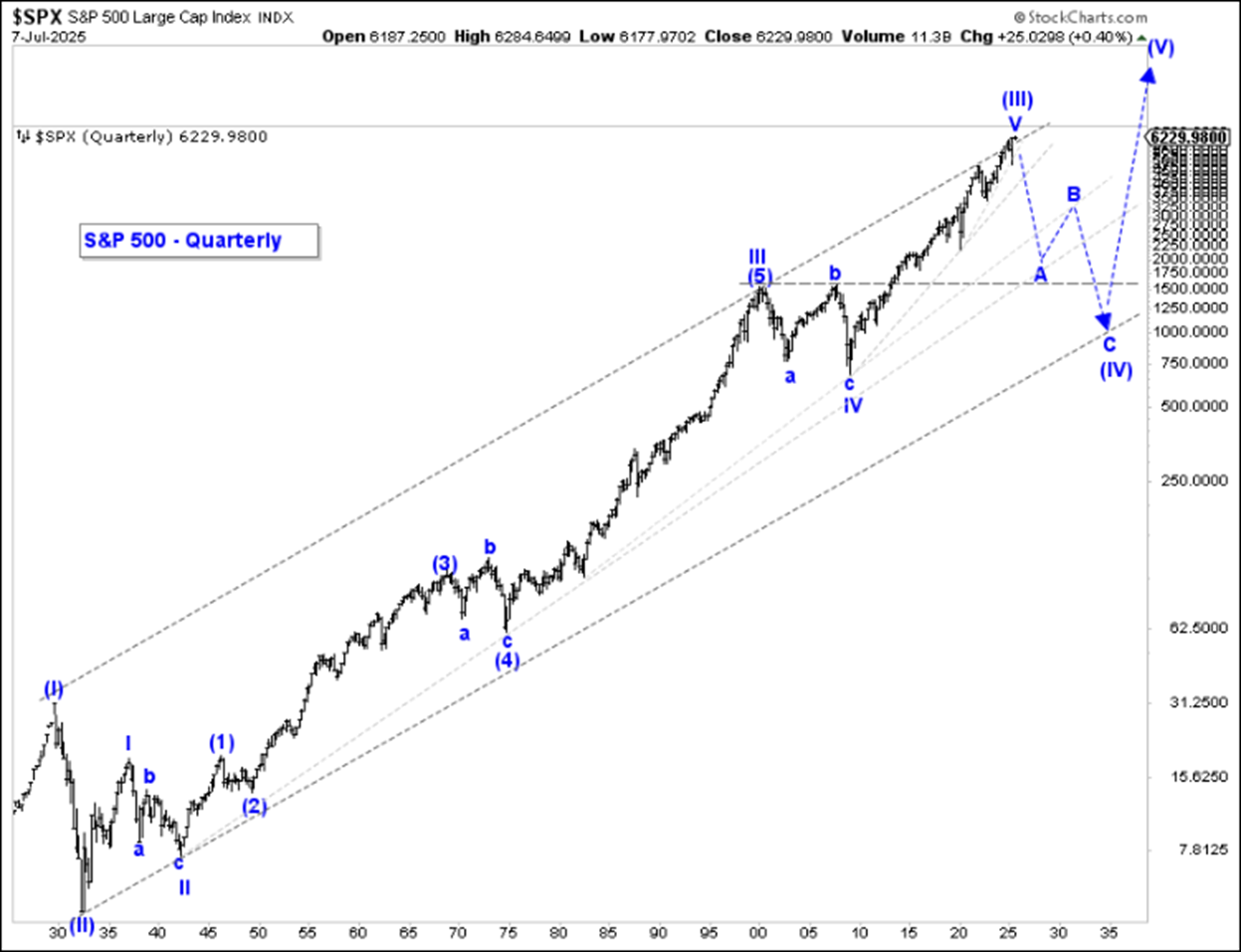
Source: www.stockcharts.com
If you can’t bring yourself to take evasive action when the market is trading at SPX 6280, you won’t be able to pull the plug at SPX 6800 either. Why not? Because it’s human nature. You’ll want more. That SPX 7500 target is still out there, and you think that you’ll be able to outsmart the market and get out at the top. But you won’t. Remember what Nathan Rothschild said, “Fortunes are made by buying low and selling too soon.”
Unlock exclusive gold and silver trading signals and updates that most investors don’t see. Join our free newsletter now!

